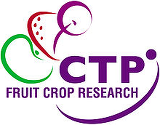RefERENCE: CTP_FCR_2020_8
Supervisors: Dr Michelle Fountain (NIAB EMR), Dr Bethan Shaw (NIAB EMR), Dr Tom Pope (Harper Adams University) and Dr Edwin Harris (Harper Adams University)
This student will be registered with Harper Adams University. Beginning in October 2020, the successful candidate should have (or expect to have) an Honours Degree (or equivalent) at 2.1 or above in Plant Biology, Zoology, or other relevant subjects.
Background
Apple orchards lend themselves to augmentation of the crop and surrounding areas to protect and enhance biodiversity and promote ecosystem services provided by invertebrate pollinators and natural enemies of crop pests. The woolly apple aphid, Eriosoma lanigerum (Hausmann) (WAA), is becoming an increasingly troublesome pest in apple orchards. Damage from the aphids and their waxy residue can become severe reaching the shoot tips and contaminating the fruits rendering them unmarketable. Reasons for the increased occurrence of WAA are not entirely clear and could include changes in pesticide use, which may have led to the removal of predators through the use of broad-spectrum insecticides, climate change, and rootstock resistance breakdown. However, the common European earwig, Forficula auricularia L. (Dermaptera), is known to be an important predator of WAA and is frequently found in apple and pear orchards within the UK. Studies in the Netherlands have suggested that 8 earwigs foraging in a tree at night could be enough to reduce WAA incidence. Pilot data collected in a previous NIAB EMR study showed that earwigs in artificial refuges tied into trees were not evenly distributed throughout trees in the orchards. In addition, no direct relationship between earwig and WAA distribution in UK apple orchards has been established. Earwigs also play a key role in regulating populations of other aphid pests, mussel scale, codling moth and pear sucker. Consumption of these pests fluctuates within the season due to prey availability.
Objectives and approaches
This study will develop a greater understanding of earwig migration in orchards and foraging behaviour in relation to pest populations and to use this knowledge to develop methods to mitigate WAA build-up. Earwigs are nocturnal and as such they represent a challenging insect to study. Studies at Harper Adams University demonstrated the use of passive radio frequency identification (RIFD) tags to trace the activity of vine weevil in crops. Smaller RFID tags are used in honey bee and bumblebee research, where the reader can be positioned at the entrance of the nest. As earwigs readily use artificial shelters placed within tree canopies, tiny RFID tags could enable earwig behaviour to be monitored in the field allowing the relationship of earwig foraging and WAA populations to be studied. The research from this PhD will be directly applicable to apple and pear growers; helping to inform management decisions providing advice on boosting earwig numbers in orchards.
Training
This PhD will train the student in several aspects of insect behaviour, including developing novel RFID techniques and give the student an understanding of orchard agronomy and IPM. This PhD also offers an excellent opportunity, not only to work with world-leading research institutes in pest control, but to directly with apple growers learning wider challenges to the industry and offering a successful student a wide range of opportunities post PhD for employment.
This work will be carried out at the National Institute of Agricultural Botany – East Malling Research (NIAB EMR) under the supervision of Dr Michelle Fountain (NIAB EMR), Dr Bethan Shaw(NIAB EMR), Dr Tom Pope (Harper Adams University) and Dr Edwin Harris (Harper Adams University).
Application
Anyone interested should return the application and equal opportunities forms to recruitmentctp@emr.ac.uk citing the reference before the deadline of 28th February 2020.
Contact Dr Michelle Fountain (michelle.fountain@emr.ac.uk) for an informal discussion.
